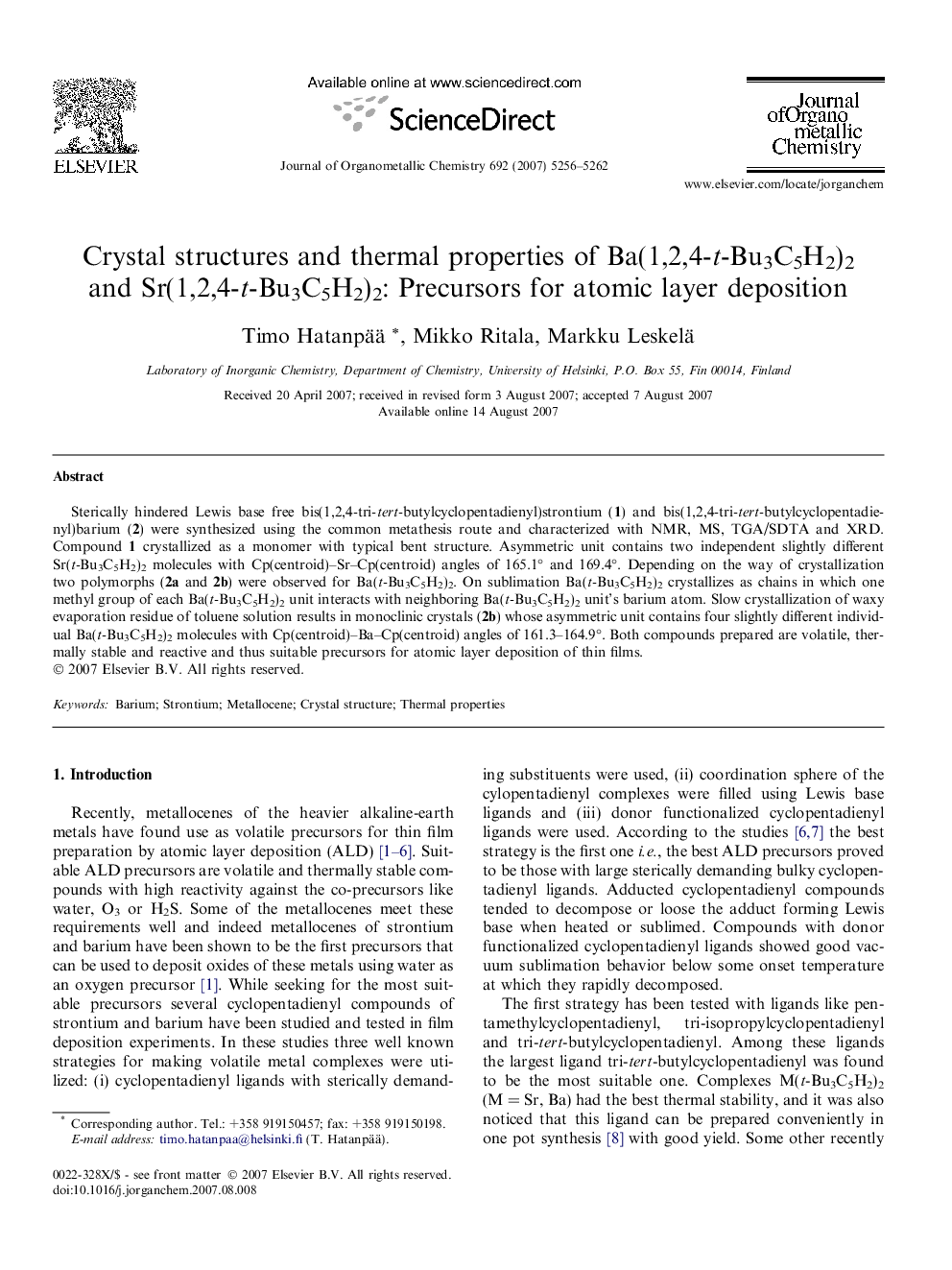| Article ID | Journal | Published Year | Pages | File Type |
|---|---|---|---|---|
| 1326331 | Journal of Organometallic Chemistry | 2007 | 7 Pages |
Sterically hindered Lewis base free bis(1,2,4-tri-tert-butylcyclopentadienyl)strontium (1) and bis(1,2,4-tri-tert-butylcyclopentadienyl)barium (2) were synthesized using the common metathesis route and characterized with NMR, MS, TGA/SDTA and XRD. Compound 1 crystallized as a monomer with typical bent structure. Asymmetric unit contains two independent slightly different Sr(t-Bu3C5H2)2 molecules with Cp(centroid)–Sr–Cp(centroid) angles of 165.1° and 169.4°. Depending on the way of crystallization two polymorphs (2a and 2b) were observed for Ba(t-Bu3C5H2)2. On sublimation Ba(t-Bu3C5H2)2 crystallizes as chains in which one methyl group of each Ba(t-Bu3C5H2)2 unit interacts with neighboring Ba(t-Bu3C5H2)2 unit’s barium atom. Slow crystallization of waxy evaporation residue of toluene solution results in monoclinic crystals (2b) whose asymmetric unit contains four slightly different individual Ba(t-Bu3C5H2)2 molecules with Cp(centroid)–Ba–Cp(centroid) angles of 161.3–164.9°. Both compounds prepared are volatile, thermally stable and reactive and thus suitable precursors for atomic layer deposition of thin films.
Graphical abstractSr(t-Bu3C5H2)2 crystallizes as a monomer with typical bent structure. Depending on the way of crystallization two polymorphs are observed for Ba(t-Bu3C5H2)2. Ba(t-Bu3C5H2)2 forms either individual molecules with intramolecular methyl to barium close contacts or chains in which one methyl group of each Ba(t-Bu3C5H2)2 unit interacts with neighboring Ba(t-Bu3C5H2)2 unit’s barium atom.Figure optionsDownload full-size imageDownload as PowerPoint slide
